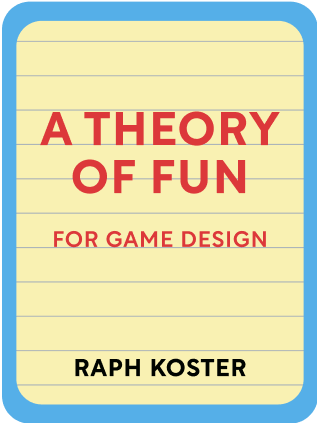

This article is an excerpt from the Shortform book guide to "A Theory of Fun for Game Design" by Raph Koster. Shortform has the world's best summaries and analyses of books you should be reading.
Like this article? Sign up for a free trial here .
What are game mechanics? What are the most common gameplay paradigms? How do you innovate a game?
A Theory of Fun for Game Design author, Raph Koster, explains that the holy grail of game mechanics should provide never-ending challenges, require a varied skill set, and have a difficulty curve that adjusts to your skill level. Unfortunately, a lot of games fall back on cliched game mechanics.
Keep reading for Raph Koster’s explanation of game mechanics.
Game Mechanics
What are game mechanics? Well, games are composed of building blocks, or “ludemes.” Examples of ludemes include:
- Preparation
- Before facing a challenge, the game has you make choices that affect your odds of success.
- Without this, a game relies on chance.
- Sense of space
- The landscape of relationships between objects or players
- A solid core mechanic
- This is the intrinsically interesting rule set or puzzle to solve. It often involves estimating probability, matching, balancing, or classifying.
- Example: moving a piece in chess
- A range of challenges
- This is content in the game, rather than the abstract rules of the game. The content operates within the rules and does not change the rules.
- Example: enemies in a game that progressively get more difficult, but all behave according to the rules of the game
- A range of abilities
- Many games reveal your abilities over time, until at the end you have many possible strategies to choose from.
- Higher difficulty levels may require utilizing multiple abilities at once.
- Skill required in using the abilities
- Bad execution by the player can cause failure in the challenge.
- Without a skill curve, the game becomes tedious or boring. Not employing skill is a cardinal sin in game design—they fail to exercise the brain.
- Unfortunately, a lot of people prefer games that take no skill because these games are comfortable.
- Variable feedback
- The result of the game shouldn’t be predictable.
- Greater skill should lead to better rewards.
- Failure must have a cost.
- At the least, failure should have an opportunity cost, or require another try.
- In more extreme games, failure can cause you to start all over again, as in rogue-like games.
The holy grail is a game that provides never-ending challenges, requires a wide range of skills to succeed, and has a difficulty curve that perfectly adjusts to your skill level over time. This sounds a lot like life.
This is why many great games with enduring popularity are competitive head-to-head games. Having other opponents provides an infinite number of challenges.
Gameplay Paradigms
Games also feature gameplay paradigms, such as:
- Get to the other side
- Examples: Frogger, Donkey Kong
- Visit every location and find secrets
- This trains being thorough, having patience, and confronting the desire to proceed to the final goal
- Examples: Pac-Man, Q-Bert
- Time limits
- This trains the rote mastery of movements so it becomes subconscious.
- Strategy games rarely have time limits because they’re not about automatic responses.
- Powerups
- Gamification is often layered on top of systems that lack the interpretability of a good game. A good reward structure does not make a good game.
Despite the vast number of game titles, new games typically improve only incrementally in the play space.
The author argues that there have only been 5 fighting games in all history
- Rock paper scissors—three moves, one hit kill, no movement
- Karate Champ—allowed movement toward and away
- Karateka—fight through a series of opponents while moving sideways
- Battle Arena Toshinden—a 3D fighting game where you can face an arbitrary angle
- Bushido Blade—a true free-roaming 3D fighting game
Every other fighter game is simply a fresh coat of paint on the same idea.
The author bemoans games that add additional complexity to a game genre without innovating the core mechanic—for instance, adding a bewildering array of weapons to a shooting game. This additional complexity makes it progressively esoteric and unappealing to newcomers.
Games that don’t innovate, such as platformers or shoot-em-ups, stagnate and wither away. People have learned the mechanic the game teaches, and they have learned patterns unlikely to be repeated elsewhere.
Game designers are partial culprits for unoriginality—they sample more games than the average player, build up ludeme blocks, and build from them.
How to Innovate in Games
To innovate in games, find a new dimension to add to the gameplay.
Take the game of Tetris. Changing the square blocks to hexagons isn’t a big change, and it’s unlikely to teach revelatory new things.
But what if you took a puzzle game and added a time component?
Consider extreme constraints—could you make a one-button game?
Try not to focus too much on other games for inspiration.
Categorizing Human Activities
Aspects of a human activity can be put on a 3×3 grid. One axis is how the game is played in relation to other people: it can be collaborative, competitive, or played solo.
On the other axis is the purpose of the game: it can be constructive, deconstructive, or experiential.
Here’s the 3×3 grid for games:
| Collaborative | Competitive | Solo | |
| Constructive | Team game design | Commercial game development | Indie development |
| Experiential | Co-op gaming | PVP gaming | Single-player games |
| Deconstructive | Community unpacking (speedrunning, strategy guides) | Hacking, cheats | Solo deconstruction |
More generally, human endeavors of any kind fit into this grid:
| Collaborative | Competitive | Solo | |
| Constructive | Community | Job | Hobby |
| Experiential | Performance | Sport | Audience |
| Deconstructive | Teaching | Criticism | Analysis |

———End of Preview———
Like what you just read? Read the rest of the world's best book summary and analysis of Raph Koster's "A Theory of Fun for Game Design" at Shortform .
Here's what you'll find in our full A Theory of Fun for Game Design summary :
- What makes games fun
- Why it's important for games to have a learning component
- Whether or not games should be considered art






